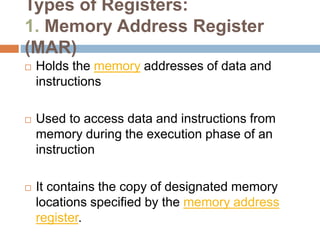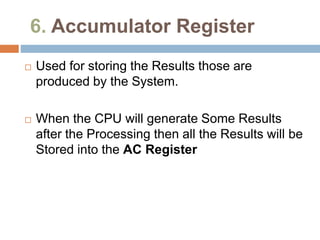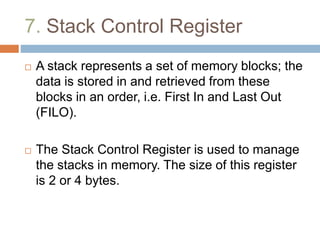Registers are small data holding places within a computer's processor. They typically hold instructions, addresses, or data and perform fetch, decode, and execute functions. The main types of registers include memory address registers, memory data registers, index registers, general purpose registers, program counters, pointer registers, accumulator registers, stack control registers, and flag registers. Flag registers in particular contain status flags that indicate conditions like carry, zero, or overflow from executed instructions.



























